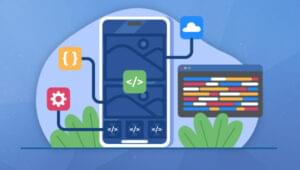 Apple Remote Desktop 3
Apple Remote Desktop for Mac OS X provides remote access to other Mac computers. Features include searches across multiple systems, more than 40 Automator actions, a Dashboard widget, and user history and reporting. For remote support functions, you can use the Remote Drag-and-Drop copy function to copy and paste between local and remote systems. The software includes access to 10 managed systems.
Apple Remote Desktop 3
Apple Remote Desktop for Mac OS X provides remote access to other Mac computers. Features include searches across multiple systems, more than 40 Automator actions, a Dashboard widget, and user history and reporting. For remote support functions, you can use the Remote Drag-and-Drop copy function to copy and paste between local and remote systems. The software includes access to 10 managed systems.
 BeAnywhere
BeAnywhere provides access to see and control a remote computer as well as file transfer functionality without the need to pre-install software on the client’s computer. BeAnywhere is priced per support technician.
BeAnywhere
BeAnywhere provides access to see and control a remote computer as well as file transfer functionality without the need to pre-install software on the client’s computer. BeAnywhere is priced per support technician.
 GoToMyPC
GoToMyPC allows you to remotely access a Mac or PC from any web browser in real time. Features include automatic setup, 128-bit AES encryption, remote printing, file sync and transfer, and sound. Several monthly plans are available.
GoToMyPC
GoToMyPC allows you to remotely access a Mac or PC from any web browser in real time. Features include automatic setup, 128-bit AES encryption, remote printing, file sync and transfer, and sound. Several monthly plans are available.
 LogMeIn
LogMeIn lets you connect to remote computers from any Internet-connected web browser. Features include file transfer, file sharing, remote to local printing, remote to local audio, diagnostic toolkit, alerting and monitoring, and advanced reporting and analysis. Account fees based on the number of computer connections.
LogMeIn
LogMeIn lets you connect to remote computers from any Internet-connected web browser. Features include file transfer, file sharing, remote to local printing, remote to local audio, diagnostic toolkit, alerting and monitoring, and advanced reporting and analysis. Account fees based on the number of computer connections.
 RealVNC
RealVNC provides remote control software with features including Mac OS X access (Enterprise edition), server authentication and 128-bit AES session encryption, printing functionality, file transfer, integrated address book and chat. RealVNC provides both free and paid licensing options.
RealVNC
RealVNC provides remote control software with features including Mac OS X access (Enterprise edition), server authentication and 128-bit AES session encryption, printing functionality, file transfer, integrated address book and chat. RealVNC provides both free and paid licensing options.
 ShowMyPC
ShowMyPC provides desktop sharing and remote PC access. Features include integration with your web site, chat and white board, desktop and audio recording, file and application sharing, and integrated Mac and Linux support. There are several subscription plans available.
ShowMyPC
ShowMyPC provides desktop sharing and remote PC access. Features include integration with your web site, chat and white board, desktop and audio recording, file and application sharing, and integrated Mac and Linux support. There are several subscription plans available.
 SkyFex
SkyFex is a remote support solution that allows desktop sharing and remote desktop control. Features include 128-bit encryption, no software installation required, and firewall/proxy transparent. Free and paid plans available.
SkyFex
SkyFex is a remote support solution that allows desktop sharing and remote desktop control. Features include 128-bit encryption, no software installation required, and firewall/proxy transparent. Free and paid plans available.
 TeamViewer
TeamViewer lets you establish instant connections to any computer over the Internet over an AES (256 Bit) encoded session, and includes features such as integrated file transfer, browser-based access, and optimized display quality. The service is free for non-commerical users and has several licensing options for business accounts.
TeamViewer
TeamViewer lets you establish instant connections to any computer over the Internet over an AES (256 Bit) encoded session, and includes features such as integrated file transfer, browser-based access, and optimized display quality. The service is free for non-commerical users and has several licensing options for business accounts.
 UltraVNC
UltraVNC is software that provides access and control of another Windows machine from a remote location. Features include data encryption, chat functionality and file transfer. The software is free under the GNU General Public License.
UltraVNC
UltraVNC is software that provides access and control of another Windows machine from a remote location. Features include data encryption, chat functionality and file transfer. The software is free under the GNU General Public License.

Frequently Asked Questions on Remote Desktop Access and Client Support
What is remote desktop access and how does it work?
Remote desktop access is a technology that allows a user to connect and control another computer or device from a different location. This is achieved through software that creates a virtual network connection, enabling the user to view the remote desktop screen and perform actions as if they were physically present at that location. This technology is particularly useful for providing technical support, managing servers, or accessing files and applications on a remote computer.
What are the benefits of using remote desktop access for client support?
Remote desktop access offers numerous benefits for client support. It allows for immediate response to client issues, eliminating the need for physical presence. This can significantly reduce downtime and improve productivity. It also enables support teams to handle multiple client issues simultaneously, increasing efficiency. Additionally, it provides a practical solution for supporting remote or mobile workers, or clients in different geographical locations.
How secure is remote desktop access?
Security is a critical concern with remote desktop access. Most remote access software uses advanced encryption technologies to ensure that all data transmitted is secure. Additionally, they often include features like two-factor authentication, session recording, and customizable user permissions for added security. However, like any online activity, it’s essential to follow best practices for cybersecurity, such as using strong passwords and keeping software up-to-date.
Can I access a remote desktop from different operating systems?
Yes, most remote desktop access software is cross-platform compatible. This means you can use them to connect between different operating systems, such as Windows, Mac, Linux, and even mobile platforms like Android and iOS. However, the specific features and capabilities may vary between different software and operating systems.
What factors should I consider when choosing remote desktop access software?
When choosing remote desktop access software, consider factors such as ease of use, compatibility with your operating system, security features, and the level of customer support provided. Also, consider the software’s performance, such as its speed and reliability, and whether it offers features like file transfer, multi-monitor support, or session recording.
Is there a difference between free and paid remote desktop access software?
While free remote desktop access software can provide basic remote access capabilities, paid versions often offer more advanced features and capabilities. These may include higher security levels, better performance, and additional features like file transfer, session recording, or multi-monitor support. Paid versions also typically offer better customer support.
Can I use remote desktop access software for personal use?
Yes, many remote desktop access software options are suitable for personal use. They can be used to access your home computer from work or while traveling, for example. However, personal use often comes with different licensing terms and may have limitations compared to business or professional use.
How can I improve the performance of my remote desktop access?
Performance in remote desktop access can be improved by ensuring a stable and high-speed internet connection, keeping the software up-to-date, and optimizing the settings based on your needs. Some software also allows you to adjust the quality of the remote display to improve performance.
Can multiple users access a single remote desktop simultaneously?
This depends on the specific remote desktop access software. Some software allows multiple users to access a single remote desktop simultaneously, which can be useful for collaborative work or training purposes. However, this feature may not be available in all software or may require a specific type of license.
What is the difference between remote desktop access and screen sharing?
While both remote desktop access and screen sharing allow you to view another computer’s screen, they serve different purposes. Screen sharing is typically used for presentations, demos, or collaborative work, where multiple users view and potentially interact with the same screen. In contrast, remote desktop access allows a user to control another computer remotely, often used for technical support or remote work.
Alyssa Gregory is a digital and content marketer, small business consultant, and the founder of the Small Business Bonfire — a social, educational and collaborative community for entrepreneurs.



